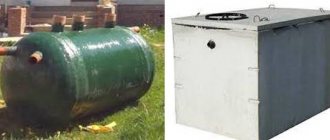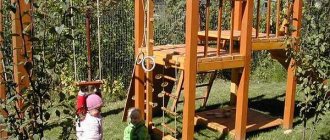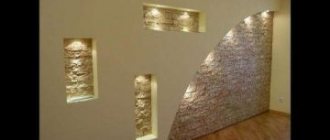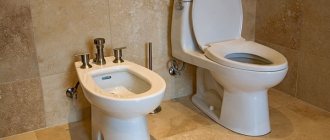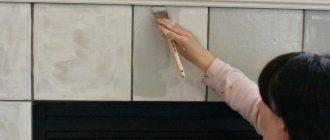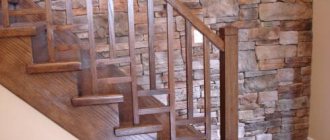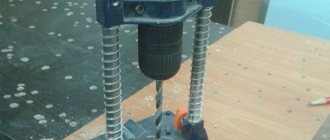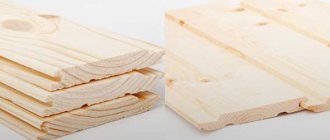Biofireplace is a modern replacement for wood-burning fireplaces with the possibility of installation in an apartment or office. Biofireplaces have a lot of advantages: there is no need to install a chimney or prepare logs, compactness, the ability to see a living flame, ease of maintenance, environmental friendliness, safety, aesthetic appearance, absence of soot and soot.
Refueling is carried out only when the flame is extinguished.
But such pleasure is very expensive. We suggest you make a bio-fireplace with your own hands, it’s really simple, it won’t take you much time and will significantly save your budget!
Bio-fireplaces are not recommended for use in bathrooms and rooms with an area of less than sixteen meters (per burner).
I use special lighters to light biofireplaces.
It is not safe to use matches and newspapers for this purpose.
What is a biofireplace and its functions in the interior of an apartment and house
A bio-fireplace (eco-fireplace) is a device designed to heat a room and runs on environmentally friendly fuel. Does not require installation of a chimney or hood. It can be installed in an apartment with any interior style and will bring a note of comfort, tranquility and harmony to it. You can make your own eco-fireplaces from inexpensive scrap materials.
When installing a biofireplace, it is not necessary to install a chimney and hood
Designs for decorating and heating a room can be small or large-sized
With their help, they design recreation and relaxation areas, focus attention on some element of the interior, and are often used as attributes of a romantic evening. No permits or approvals are required for their installation in city apartments
Manufacturers of eco-fireplaces offer a wide range of models. There are designs that are remotely controlled and equipped with a fuel consumption system.
Advantages of eco-fireplaces:
- when heating the room, they do not reduce the level of air humidity;
- do not require complex installation;
- 100% heat transfer, since heat loss when passing through the chimney is eliminated.
Fuel for biofireplace
In terms of its basic technical characteristics, the biofuel used in special biofireplaces is very different from those liquids that are used in classic wood-burning heating devices.
Denatured ethanol, which is safe for the environment, is used to produce fireplace fuel.
Such fuel is advantageously distinguished by the formation of very beautiful and even flames without the release of by-products such as soot, soot, smoke or fumes. As practice shows, the efficiency of high-quality biofuel exceeds 90-95%.
The best proven biofuels are those produced by manufacturers in Germany, Holland and France. Their products fully comply with all quality standards, are completely safe to use and allow you to achieve a high level of room heating at minimal cost.
Depending on the design features of the fireplace device, biogas can be used as fuel, as well as bioethanol and biodiesel liquid obtained by processing vegetable and animal fats.
Biofuel is sold packaged in special containers of different volumes.
Many modern manufacturers bottle fireplace fuel in containers that have a very convenient scale for flammable liquid consumption.
Some domestic and foreign manufacturers specially add sea salt to fireplace fuel, which creates the crackling effect of stove logs, as well as special additives that guarantee an attractive and absolutely even orange color of the burner flame.
Instructions for making a bio-fireplace with your own hands
In this section we will look at how to make a bio-fireplace with your own hands.
The entire process of self-manufacturing a tabletop heating fireplace powered by biofuel is represented by several stages, including the assembly of the fuel block and glass chamber, as well as the final design and decor of the completely finished structure:
- At the first stage, it is necessary to build a fuel block based on a ready-made or self-made metal box, which must be painted from the front with high-quality metal paint.
- The inside of the fuel tank must be thoroughly cleaned of dust, rust or welding deposits, but painting it with paint is strictly prohibited, since otherwise there will be an active release of toxic components during combustion.
- At the next stage, all pre-prepared glass blanks are combined. High-quality silicone sealant is used for connection. After the adhesive is applied to the ends, supports are used, which allows you to obtain the most durable and reliable fastening of the parts.
- As a rule, the layer of sealant hardens completely within 24 hours, after which you need to carefully remove all excess and sagging using a regular blade, stationery or thin penknife;
- At the next stage, it is necessary to properly prepare fireplace biofuel, which, for the purpose of safe operation of the heating device, must be poured into a metal container and installed in the bottom of the metal fuel block. A wick cord is required. As necessary, the fuel container is replaced with a new portion of liquid for burning the tabletop fireplace.
At the final stage of manufacturing, you need to make a cover for the heating box yourself. It is best to use a fine-mesh construction metal mesh for this purpose, which should be cut in accordance with the dimensions of the box.
Design of a homemade biofireplace
A mesh with a large mesh can be laid in two layers, after which the lid is fixed with thick wire. In this case, adding biological fuel is carried out using a conventional medical syringe.
To give a tabletop heating device a finished look and improve its external characteristics, all kinds of decorative elements, represented by decorative stones or pebbles, are used.
Laying such natural stones on top of the mesh not only creates an attractive design, but also helps to achieve the most efficient and uniform distribution of thermal energy.
And if you want a large bio-fireplace?
With large fireplaces, of course, there is more hassle. First you need to place the wall and cut out what you need from the drywall. If the wall is not made of plaster, then hollow out the millet. Next, you need to make a frame for the fireplace - it can be the same drywall (do not forget to secure the frame).
To assemble large fireplaces, still purchase a specialized fireproof box. This miracle is sold in special stores. We must not forget that between the frame and the box it is necessary to lay out a fire-resistant material, at least mineral wool. And it’s better to buy a special, large burner. This option will still be cheaper than buying a solid fireplace. We cover it with fireproof tiles or stone. You can look on the Internet for photos of a bio-fireplace and how to decorate it.
As you can see, making a bio-fireplace with your own hands is not that difficult, the only thing is that now it’s always worth purchasing oil for bio-fireplaces. Other oils are obviously unhealthy or leave behind soot.
How to make a bio-fireplace with your own hands - step-by-step instructions
In appearance, a floor-mounted biofireplace can be indistinguishable from a real one, made of brick and having a chimney. The design of the housing can be different:
- with columns;
- with projections;
- have the shape of a bowl or cabinet with legs.
The base of a biofireplace is easier and cheaper to build from plasterboard and metal profiles. From these materials you can make a geometrically regular, semicircular or wavy body. Instead of gypsum board, you can use wood, durable plastic or metal.
Design and drawings
At the design stage of the biofireplace, its dimensions and installation location are determined. Floor structures are stationary, so you need to choose a place so that the fireplace fits harmoniously into the interior after changing the design of the room or purchasing new furniture. For small-sized apartments, medium-sized floor structures indicated in the drawing are suitable.
The drawing will help you quickly produce all the necessary parts for the fireplace.
Case manufacturing
To install the biofireplace body you will need:
- plasterboard 9 mm thick;
- metal profile PP 60/27;
- self-tapping screws;
- screwdriver;
- serpyanka;
- primer;
- putty;
- spatula with a narrow metal blade;
- roulette;
- ruler;
- bubble level at least 80 cm long;
- pencil or marker.
Suitable for decorating the case:
- fake diamond;
- ceramic tile;
- plastic panels “brick-like” or “stone-like”.
Housing installation steps
- Marking the wall and floor. Based on the previously drawn up drawing, mark the corner points of the back wall of the fireplace on the wall and connect them with straight lines. Mark the location of the front wall of the cabinet on the floor.
- Frame installation. Build a structure frame from a metal profile. Keep in mind that the planks should not be in close contact with each other. There should be a gap of 2–3 mm wide between them. This will prevent the structure from distorting during heating and cooling.
- Frame covering. Using a jigsaw or a utility knife, cut the gypsum board sheets to the required sizes. Attach them to the metal profile frame. “Down” the caps of the self-tapping screws into the gypsum board by 1–2 mm.
- Preparing drywall for finishing. Cover the joints of the gypsum board sheets with glass-woven mesh tape - serpyanka. Apply putty in the places where the screws are installed and cover with a thin layer of serpyanka. After the putty has dried, start sanding it. To do this, use a special trowel with a sanding mesh.
- Housing cladding. Cover the body of the bio-fireplace with the previously selected facing materials.
Installing the fuel block and burner
You can make a metal container for the fuel block yourself from stainless steel 2 mm thick. It is necessary to make a rectangular structure with a bottom and low sides. The dimensions of the block must correspond to the dimensions of the housing.
The burner is a metal cartridge that is installed in a container. Together they form the fuel block. An important element of the burner is the perforated damper, which is used to extinguish the flame and regulate its intensity.
When making your own, consider the following:
- the burner must fit freely into the metal container;
- the top panel of the burner may be a metal plate with slots;
- The internal cavity of the burner can be filled with mineral wool insulation or medical wool.
Operating principle of the fuel unit:
- Eco-fuel is poured into a metal container;
- The burner filler absorbs liquid;
- ignite fuel with a lighter.
Fireplace decoration
A protective screen made of ordinary window glass with polished edges is installed on the front wall of the biofireplace. The fuel block is decorated with ceramic firewood or stones.
Design project for a bedroom 30 sq. m in classic style, with wardrobe
Design project of a bedroom 30 sq. m high price category. Expensive building materials were used for its decoration, and the interior consists of expensive, mostly designer accessories. This luxurious bedroom is decorated in a classic style with the addition of elements from other stylistic trends.
Classic style is a combination of impeccable taste, luxury and comfort. Many designers consider it ideal for decorating a bedroom.
— Use of expensive accessories, high-quality carpets and textiles.
How to choose a headset color
When a general style solution for decorating a room has been chosen, you can decide on the color scheme. For a children's room, choose bright, but not too expressive and saturated colors. Such that will please the child’s eye, but will not overstimulate his psyche. For example, the color of young greenery, light blue, yellow, lilac, pink. If a child asks to buy bright furniture for the bedroom, then it is better to choose calmer colors for the walls, floor and ceiling. So, bright bedrooms lapis lazuli, mahogany, indigo will go well with beige or sand surfaces.
For the bedroom of a young couple, psychologists advise choosing bright dominant colors - red, blue, burgundy. They allow you to spur feelings and do not allow passion to subside. Pinskdrev bedrooms or modern are chosen to decorate the room . Their neutral color scheme harmoniously combines with expressive decoration and decor, while slightly extinguishing their energy, allowing you to sleep in comfort.
Helpful advice. When choosing the color scheme of furniture, use the principle of contrast. If the walls and floors have dark, rich colors, then light furniture will look good against their background. If light wallpaper (plaster, wood panels, etc.) was used to decorate the walls, then it is better to buy darker furniture.
occupies a special place in the design of cozy rooms with a calm homely flavor . It literally encourages relaxation, not only physical, but also spiritual. A room in Provence style is filled with the colors of the French Riviera, slightly faded and whitened in the sun, cozy textiles with small floral patterns, frills and ruffles, comfortable furniture and handmade decor.
Rectangular bedroom interior
In order for the interior of a rectangular bedroom to look most harmonious, 2/3 of the space should be occupied by sleeping space, and the remaining 1/3 can accommodate a wardrobe for clothes and linen, an additional seating area or even a desk.
In a rectangular room, it is better to place the bed according to the width of the space. Racks and shelves are perfect along long walls.
A small table for reading and writing would be appropriate.
What it is?
The biofireplace is a bladeless design that burns not wood, but liquid fuel. The history of biofireplaces dates back to ancient times; the prototype was oil lamps or special vats of oil.
In order to please yourself with a bio-fireplace, you do not need to build a chimney, but only periodically ventilate the room. After all, this is fire, and it still takes oxygen. Moreover, biofireplaces come in several modifications, which will allow you to make your dreams come true:
- large floor fireplaces, the same size as regular ones;
- lightweight fireplaces that effortlessly cling to a wall or ceiling, but only the fireplace will be enclosed with special glass for safety purposes.
- small bio-fireplaces that easily fit on a table or cabinet and harmonize perfectly with the interior.
This type of fireplace has a simple design, but is quite expensive. You can find a way out of the situation and how to make a fireplace with your own hands, especially since the materials for it are sold in every hardware store. To do this you need the following list:
1. Glass. To do this, you just need to go to a regular glass workshop. Of course, the volume and dimensions will depend on your idea.
2. Silicone sealant, which is sold in every hardware store.
3. Metal box or can for flammable liquid. In most cases, such a device is available on the farm.
4. Finishing materials: decorative stone, decorative brick, etc.
e41dbbc8cbcac979c99be0c7ea3ee4d4.jpe
5. Wick cord.
Before you take on a bio-fireplace, you need to make at least a rough drawing or search on the Internet.
The most important part for a biofireplace is the burner. If something is done incorrectly, the consequences can be disastrous. So, here are some tips for making:
- if the fireplace is opaque, then you need to paint the narrow fuel outlet from the outside;
- a fine mesh is carefully cut to size and laid out at the top of the container. This is necessary for a more even distribution of fire and for decoration. You must watch carefully so that this mesh does not fall inside the fuel container.
Reviews
I made a small outdoor bio-fireplace with my own hands. The main materials are metal profiles and MDF. Sheathed it and finished it like a brick. In the store I bought semi-charred ceramic firewood, which you can’t immediately distinguish from real ones. Now I have my own cozy corner at home. Everyone is happy, both wife and children.
Ivan 35 years oldMoscow
Essentially, a biofireplace is a container with alcohol, beautifully decorated. I made it from an ordinary small ceramic flower pot. He put stones at the bottom and placed a burner on top. I did not install glass, since the fireplace is on the table and produces a small flame. I use it for romantic meetings.
Sergey, 40 years old Nizhny Novgorod
We purchased a beautiful Decoflame floor standing fireplace. It has built-in microprocessors that control fuel consumption. This technology is called CEVB. The fireplace is powerful enough to heat a small space. A large fireplace needs good ventilation. We installed a forced one with a built-in hood. Never regretted the purchase. A biofireplace makes the apartment cozy.
Anna 26 years old Khabarovsk
We have a warm climate, we bought a bio-fireplace for beauty, not heating. We took the wall model and now in the evenings we admire the live fire.
Irina 30 years old Krasnodar
My grandchildren gave me a biofireplace. With him, my lonely evenings became warmer and more comfortable. Fuel consumption is low. 1 liter is enough for 3 hours of continuous burning.
Mikhail 56 years old Omsk
Video: making an eco-fireplace from glass
Required materials and tools
The main element of the design is the fuel tank; it is better to make it from a sheet of stainless steel. You can purchase it on the construction market or order it from craftsmen if you plan to construct a large structure.
If there is no need for large volumes, then you can use metal mugs by breaking off their handles. They must be installed in a fireproof tank.
The body itself can be made of almost any transparent material that can withstand high temperatures, for example, smoky special glass. The device can be installed on a coffee table instead of a smoking candle.
If you need an imitation of a real fireplace, you will have to make a decent base from the following materials:
- Plasterboard sheets;
- Self-tapping screws;
- Metal corners;
- The refractory material used to insulate the structure can be, for example, isover.
Simple tabletop biofireplace
Such fireplaces will serve as an ideal addition to any room design, and in the evening they will provide the opportunity to admire a live fire in all its glory. One of the main advantages of tabletop fireplaces is their simplicity. Let's take a closer look at how to make one of these bio-fireplaces.
To create such a fireplace with your own hands we will need:
- 4 glasses.
- A base box made of metal or other fire-resistant material.
- Glass cutter.
- Sealant for glass bonding.
- Steel mesh.
- Fireproof stones for decoration.
- Fuel container.
Step-by-step instructions for making a desktop biofireplace:
- We calculate the dimensions of the future structure. For one burner, the minimum distance between the glasses is 15 cm.
- We adjust the glass to the dimensions of the box. If they fit true to size, great. Otherwise, you need to cut off the excess with a glass cutter. The glass box after connection will be installed on the base.
- We connect the glass with sealant. To do this, apply sealant to the end of the glass and connect it at right angles to the other glass. It will take at least a day for the sealant to dry completely. To do this, stands are installed under each side.
- A glass box without a top or bottom is installed on a base. If the calculations were done correctly, then he should definitely be on the edge. To fasten the glass and the base, we again use sealant.
- We place a burner with biofuel in the center of the base and cover it with a steel mesh. It must be cut so that its edges lie on the edge of the base. It is recommended to lay the mesh in several layers so that it does not collapse under the weight of decorative stones.
- Place the stones in an even layer on the mesh. If you use natural stones collected with your own hands, they must be washed. In this case, when heated, they will not emit an unpleasant odor.
- If necessary, light the burner and check the result.
Important! This design is very easy to assemble, but has a number of disadvantages. First of all, it is impossible to replenish fuel without disassembling part of the fireplace
The second disadvantage is the lack of a combustion regulator. As a result, neither the flame intensity nor the fuel consumption can be changed.
Biofireplace manufacturing process
Biofireplaces can easily replace an electric fireplace or fireplace stove. This accessory brings a pleasant feeling of warmth and comfort. Of course, there is the option to buy a small potbelly stove, but this is not a very cheap product. The main process of making a home biofuel fireplace will involve selecting the necessary materials.
- The bio-stove is assembled from simple elements: a fuel tank and a frame.
- All work begins with drawing a diagram of the desired decor item on paper.
- When it is ready, you can evaluate your capabilities and start purchasing materials. If you find it difficult to develop a product plan, find photos of biofireplaces on the Internet and create your own version based on them.
- Then you should take on the drawing, where you should indicate all the exact dimensions. With its help, you will never get confused and will get the desired result in the end.
How to look for clients to sell finished products
And a little about promoting finished products on the market. If you want to build a business on mediation between the manufacturer and the consumer, then you need to be well versed in marketing and working with clients. But first, you need to make a list of biofireplace manufacturers with whom you would like to work and offer them cooperation: you give them clients and sales, they give you a reward (most likely, a percentage of sales).
You can advertise biofireplaces in any way you like: brochures, leaflets, television and radio advertising, online promotion, etc. Here, as in any advertising, it is important to clearly understand who your target consumer is and competently adjust your advertising offer to their needs and desires. Since a biofireplace is a family, homely, cozy product, then when promoting this product on the market, you need to focus on these accents.
An excellent niche for selling finished goods are construction companies and designers who directly contact the client. Here it will be enough to simply present your product well to these companies, describe all its advantages and provide it with advertising booklets. This way, they will be able to recommend your product to their clients. There is a benefit in this for both you and them - you get new clients, and they always have something to offer their clients without wasting time and effort.
What is a biofireplace
The biofireplace, which is becoming fashionable, is a decorative source of open fire that runs on so-called biofuel. For safe operation, the device is framed by a portal that traps the flame inside.
Structurally, a biofireplace is a burner that runs on alcohol fuel. A mandatory element of the device is a fuel tank, which contains a sufficient supply of flammable liquid for operation.
A wick is inserted into the tank, along the fibers of which the fuel rises to the place of combustion. The combustion itself takes place in a special bowl, which can have a variety of shapes. The sizes of biofireplaces vary significantly.
Installing a bio-fireplace is a great way to decorate your interior, make it unusual and attractive. Depending on the type of device and model, the fire can be completely open or closed on several sides by the walls of the portal, transparent and opaque
In addition, some burners are equipped with nozzles. This makes the flames as similar as possible to those formed when burning wood in a fire or fireplace.
The devices are very convenient to use. First of all, they don't need a chimney. During combustion, biofuels are oxidized to carbon dioxide and water vapor. The absence of heavy impurities in the flammable liquid allows it to burn completely, without the formation of soot, soot and volatile toxic substances.
Therefore, smoke removal (which does not form) is not required. Thanks to this, the biofireplace can be installed anywhere in the room.
It does not need a heat-resistant floor frame or a separate foundation. Special permission for its installation is also not required. The only thing that needs to be taken into account when choosing a place to install a bio-fireplace is the possibility of ventilating the room or the presence of effective ventilation. This is necessary because combustion uses oxygen, the amount of which must be constantly replenished.
To ensure that the bio-fireplace does not differ from the real one, it can be decorated with firewood made from fire-resistant ceramics. They are produced in the form of whole or half-burnt logs
Biofireplaces are not only decorative, but also functional. Unlike traditional fireplaces, where most of the heat “goes” into the chimney, the devices completely transfer their heat into the room. Of course, you won’t be able to use such a device as a heating device, but it will be able to heat some area in the room. Biofireplaces are completely safe if used correctly.
The industry produces models that are most comfortable to use, equipped with electronic controls. They can be controlled from a remote control or via Wi-Fi. In the latter case, it is quite possible to integrate the device into the Smart Home system and remotely control it from a phone or tablet. It is clear that the cost of automatic biofireplaces is an order of magnitude higher than that of conventional ones.
At the same time, standard models can be considered “eternal”, since they are structurally extremely simple and there is nothing to break in them, while devices stuffed with electronics may well fail.
Adviсe
It is worth remembering that all safety requirements must be strictly observed:
- A fireplace is not a toy for children. When using it, you should make sure that there are no children near the fire.
- Storing biofuels near a fire source and in the public domain is prohibited.
- Do not add fuel while the fireplace is operating. It is worth waiting until the equipment cools down.
- Ignition is carried out only with the help of a special lighter.
The bio-fireplace serves as an excellent interior decor, and at the same time, it can also be improved. For example, place ceramic logs on the grill that imitate real firewood. This fire source can be used not only indoors, but also outdoors. For example, decorate a gazebo with a corner homemade eco-fireplace.
Disadvantages of a biofireplace
Along with its advantages, this product has its own disadvantages, which are a tribute to convenience, safety and environmental friendliness.
Dependence on one type of fuel. The burner runs only on alcohol, while a regular fireplace can be lit with any solid flammable substance.
The relative high cost of fuel. A medium-sized heating unit (burner) consumes 0.3–0.4 liters per hour. The cost of 1 liter of fuel is on average 200–250 rubles*. Burning a fireplace for one hour will cost about 100 rubles.
We are talking about factory fuel for biofireplaces.
Minimum room area. The room in which the fireplace is installed must be at least 25 square meters. m.
| Name | Dimensions, mm | Characteristics | price, rub. |
| Floor-standing | |||
| DirectCheminee Universal, France/Russia | 760x335x800 | 1 TB* 2.5 l, hearth walls included, classic look | 75 000 |
| DirectCheminee Universal Х2, France/Russia | 980x345x1100 | 2 TB 2.5 l, hearth walls included, classic look | 95 000 |
| Planika CALVADOS Cherry/Ivory, Poland | 860x870x365 | 1 TB 2.8 l, wooden portal, classic look | 120 000 |
| DirectCheminee Baroque Italiano, France/Russia | 1300x400x1100 | 1 TB 3 l, portal and tabletop made of cast marble, sophisticated look | 145 000 |
| BERLONI Turin, Italy | 1100x1100x320 | 2 TB 2.2 l, MDF portal and painted steel | 58 000 |
| Horus Freedom Wall, Italy | 950x400x870 | 1 TB 2.9 l, portal made of steel and glass | 160 000 |
| Horus Tetris, Italy | 1000x1000x450 | 1 TB, stainless and painted steel, tempered glass, independent location | 177 000 |
| Wall mounted | |||
| Planika Wallfire, Poland | 360x810x210 | thermostat, fan heater, stainless steel/glass, 2.5–3.7 kW | 191 000 |
| Horus ZEN, Italy | 1200x340x450 | steel/glass, 2.1–2.8 kW | 140 000 |
| Horus Closer inox Frame, Italy | 640x640x220 | steel/glass, 1.8–2.2 kW | 110 000 |
| DirectCheminee Premier, France/Russia | 800x250x500 | Any finishing option from any material, 1.8–2.6 kW | 42 000 |
| DirectCheminee Autofire 146 electronic, France/Russia | 1460x290x620 | Fully electronic control system, flow rate 1 l/hour, 6.2 kW | 300 000 |
| DirectCheminee Monumentale Huge for 5 fireboxes, France/Russia | 2000x300x790 | 5 TB, painted steel, 5.8 kW | 220 000 |
| Tabletop (small) | |||
| DirectCheminee Biocandle Reed 3, France/Russia | — | Interior element, stainless steel steel | 16 000 |
| DirectCheminee Biocandle “Classic” on a marble base (Modern collection), France/Russia | — | Interior element, stainless steel steel, marble | 9 000 |
| DirectCheminee Block box 2.5 l (Artificial stone), France/Russia | 440x340x105 | Stainless steel steel, artificial stone to choose from (200 types) | 28 000 |
| DirectCheminee Block box INOX 5 l, France/Russia | 550x510x350 | Stainless steel steel, surface finish - mirror, metal, wood | 50 000 |
| Planika Simple Commerce, Poland | height 420, diameter 380 | Glass flask - Italy, burner - 1.5 l (7 hours) | 48 500 |
| Planika Stone, Poland | height 410, diameter 450 | Glass flask - Italy, Scandinavian field stone at the base, burner - 0.6 l (up to 2 hours) | 82 000 |
| Planika VERANDA GF-07 Table, Poland | height 597, diameter 700 | Glass - Italy, wood legs - teak, burner 1 l (3.5 hours) | 95 000 |
* TB - fuel block.
Operating Parameters
To know which bio-fireplace to choose, you need to take into account its technical characteristics, and not just its appearance. The parameters demonstrate the advantages and disadvantages of the model for a specific room.
Important characteristics and their meaning.
- Hearth power. Indicates such features as heat transfer, flame height and flame saturation. The power of the structure can reach up to 7 kW, which, theoretically, is enough to heat a room with an area of 70 square meters. m. On the other hand, in the warm season, the operation of a powerful bio-fireplace can cause inconvenience due to the intense heat.
- Fuel consumption. Depends on the selected operating mode. On average, 500-700 ml of fuel is required for 1 hour of operation.
- Volume of the tank. Demonstrates combustion duration on one refill, and can reach 9 liters. When refueling, you should take into account the recommendations of the developers, namely, let the bioethanol burn out completely.
- Burner material and thickness. The optimal solution is stainless steel from 3 mm or ceramics. There are dual-circuit designs that collect excess fuel, returning it to the fuel block.
It is impossible to say which bio-fireplace is better without taking into account the room.
Please note that the biofireplace has high efficiency, but relatively low heat output (considering the size of the firebox). It is highly undesirable to use heating equipment - it is not rational from the point of view of fuel cost. There is another drawback that is worth considering - the need to ventilate the room due to the inevitable release of carbon dioxide during the combustion process. If we are talking about a small room and a powerful appliance, then it will not be enough to open the doors to other rooms, and you will need to open a window or window.
Rice. 5. Process of pouring bioethanol
Advantages of a biofireplace
Biofireplace is a new product on the market that is rapidly gaining popularity. This is not only a tribute to fashion, but also a lot of beneficial advantages.
Convenience. The purity of combustion emissions allows the use of a biofireplace without a chimney. This decisive advantage makes it an exceptionally technological product - the fireplace can be placed in any location that meets the installation requirements. It does not require a separate foundation and heat-resistant floor lining. Approximately 50% of these products are made in a portable version, the rest are mounted on the floor, walls and even suspended from the ceiling.
Manufacturability. The alcohol burner hearth can be purchased separately, without a portal. It can then be installed into the firebox of an existing traditional fireplace. This will preserve the functions and appearance of the interior and eliminate the need to prepare solid fuel and the risk of smoke. Due to the simplicity and low cost of their design, full-fledged biofireplaces are available in a sufficient range of sizes. The portal can also be made to order from any material.
Safety. Factory-made fireplaces are supplied complete with protective panels and casings, so the biofireplace portal can be made of plasterboard or wood without fear of ignition from overheating. Ignition and combustion of fuel occurs without sparks or flame fluctuations (when using a special lighter). When burned, fuel breaks down into water vapor and CO2. The concentration of carbon dioxide is insignificant and does not affect air quality if there is standard ventilation of the premises.
Functionality. In a conventional fireplace, most of the heat is removed along with toxic waste gases through the chimney. In a biofireplace, the entire combustion temperature is transferred to the surrounding air. A medium-sized device is equivalent in power to a 3 kW electric heater.
Reliability, simplicity of the device. Basic models of alcohol fireplaces do not have mechanisms, moving parts, or wearable parts. When used correctly, these are “eternal” devices (service life is unlimited). “Biocombustion” does not form carbon deposits, which reduces maintenance of the fireplace to wiping along with other interior elements. More complex and expensive models have electronic control - from a panel, remote control or Wi-Fi from a tablet or phone. Like any electronic devices, they can fail, but not more often than others.
Originality and beauty. The new bio-fireplace can be matched to absolutely any design - from minimalist cold high-tech to luxurious baroque. The portal can be ordered in any workshop, from any material. Such an open fire in the middle of the room will become the emotional center of the entire house, intuitively reminiscent of distant ancestors relaxing at night around the fire. Always even and stable flames are a “living” piece of furniture that can be moved at your discretion.
Price. The price of the device itself, together with the portal, does not exceed the price of a fireplace of the same format with a traditional or electric layout.
Rules for the safe use of fireplaces
Despite the fact that biofireplaces are one of the safest fireplaces in the home , during their operation you need to follow simple rules .
- Models with an open combustion chamber must be installed at a considerable distance from combustible objects: textile interior elements, bookshelves, curtains.
- The surface on which the fireplace is installed must be level and stable, especially for models using liquid fuel.
- You should not leave the fireplace uncontrolled or trust children to light it.
- If the fireplace is not in use for a long time, drain the fuel from it. Bioethanol must be stored in a place that prevents overheating and contact with open fire.
- Fuel can only be added to a fireplace that is extinguished and has completely cooled down.
- Ignition is carried out with a special lighter for bio-fireplaces, which prevents burns.
- Bio-fireplaces can only be decorated using elements specially designed for this purpose: stones, imitation coals and logs made of heat-resistant ceramics.
- Built-in models must be installed in niches made of fire-resistant materials.
DIY bio-fireplace made from plasterboard
The chosen location determines the shape in which the biofireplace will be made - corner or straight, along the wall. Anyone who sets out to create a fireplace at home must prepare or find a sketch with instructions on how to make a biofireplace yourself, and purchase the necessary materials:
- Drywall and profiles for it.
- Self-tapping screws.
- Materials for interior decoration, for example, ceramic tiles and heat-resistant adhesive for them.
- Exterior finishing material, such as stone.
- Cotton wool, grout and finishing putty.
We recommend reading in more detail on our website how to make a tabletop biofireplace yourself.
Drawings of finished bio-fireplaces contain information on how to make bio-fireplaces, namely, determine the dimensions. However, the design of the structure can be absolutely anything - you just need to use your imagination.
3cb4dd33d05ffdea50addfaf5977d759.jpeWhen everything is ready to start working, you can begin to perform the following steps sequentially:
According to the instructions, marking lines are drawn on the wall, to which the formed guides for the body of the bio-fireplace are subsequently attached. Using self-tapping screws, rack profiles and frames are installed.
Using a plumb line, you need to check the correct location of all elements
Next, during the construction of a biofireplace, the frame is covered with plasterboard. The optimal distance at which it should be fastened is from 10 to 15 cm. When performing this work, you also need to lay a layer of mineral wool about 5 cm thick in the firebox area.
The direction of the fibers - vertical or random - of mineral wool affects the properties that it best provides. Thus, for bio-fireplaces, a material with a chaotic direction is suitable, which better provides thermal insulation properties.
A recess is left at the bottom of the firebox, into which the burner will be installed in the future. Then, using non-combustible materials, the bottom of the bio-fireplace is formed. On the outside, the drywall is puttied and lined with the selected material.
For cladding, a material more suitable for the interior and price parameters is selected. The main thing is that it is fireproof.
The remaining seams are rubbed down, the surface is wiped with a damp and dry cloth. After this, when building a bio-fireplace with your own hands, you can start decorating - add a burner, lay out decorative elements. You can also take additional protective measures, such as installing fire-resistant glass on the front wall.
The burner allows you to reproduce the fire evenly, with a bright color, without flashes. Some burner models contain protection against fuel spillage when tipped over.
Outdoor table with fireplace
It's actually a very simple pallet table with a hearth in the center . You will probably be able to assemble it without any instructions, guided by step-by-step photos that the author of this project kindly posted on the Internet. The main thing is to prepare the material in advance and evaluate what will come of it. Experience has taught me that it is much better to work with what you have than with what you think you have. If you are also going to use old pallets, then be prepared for the fact that some of the material will be unusable. Therefore, when you find pallets, take them apart, sort all the wood into categories, and calculate the overall dimensions. The author used three pallets to make the table. The length connecting the legs is 1 meter long and has been screwed and glued.
- Using the base, install two boards to make a square, with the rest of the tabletop level and fastened underneath.
- Calculate the middle of the table and install the hearth.
- Then add 5 boards, 2 on one side and 3 on the other. This is enough to keep the hearth in place.
- We secured the legs with a large number of screws.
- Nail two more boards to the legs, to the inside of the table, to provide additional support. It doesn't look very nice, but you can't see them from the inside.
- Cut small pieces of wood to the required size to fill the gap.
- Buy a can of black heat-resistant paint and paint the fireplace.
Look like that's it. True, the author did not say anything about how the hot fire will interact with the wood, so I advise you to anticipate this issue and add some insulating material to the points of contact between the metal and the wood.
Step-by-step assembly instructions in detail
There are a lot of ways to make a fireplace for apartments. For example, there are step-by-step instructions for assembling a decorative stove that will fit perfectly into any home.
To create it you will need the following parts:
- fuel block with a valve, a stand for it (made of metal);
- fire-resistant ceramic glass for both walls;
- bolts, washers and pads;
- rubber gaskets and metal legs;
- black paint that protects from fire, or a special material used for the panel design (stone, aluminum).
Regular assembly:
First of all, make a part for the tank.
- According to the drawings, make 2 beams. They will act as fastening for the plywood part. You only need to cut out the top and bottom halves. A glass frame will be attached to the bottom.
- Make a rectangular hole at the top for the fuel container.
- Drill holes for the bolts. Bolts that have silicone gaskets will pass through them. All actions must be carried out carefully so that the structure does not break.
- When the structure is ready, a fuel container is installed in its upper half (in the cut hole).
Outdoor fireplace in the country
Using these instructions, you can build a three-stage outdoor fireplace with your own hands . All levels are made from different materials, so you can learn several new skills at once. The lower tier will give you experience on how to build a stone base. Intermediate – how to work with metal. Top - how to make a metal frame and cover it with tiles. You can use these same skills for other projects you might want to undertake. More importantly, your fire pit can be made into any shape or material you desire. You can also learn about some things to consider when building a fire pit here.
Below you can see step-by-step photos; a person with experience will find complete information there. If you are interested in more specific details, the author has more than detailed instructions on the website, with nuances and explanations. I didn’t undertake to rewrite it, it’s really very long, if you want to read it, the link to the site is under the gallery.
Types of biofireplaces
Depending on the dimensions of the structure and the location of its installation, there are several types of biofireplaces.
There are several types of biofireplaces
Floor-standing
The advantage of such a fireplace is its mobility
Massive and solid structures that can be installed next to a wall or anywhere in the room. The design solutions of the case are very different. There are eco-fireplaces made in the shape of a tree trunk, forged, decorated with carved metal sheets, decorated with colored glass inserts.
a53da261ccb611fe793540376b572e56.jpe
Ceramic firewood is purchased for floor-standing devices; outwardly it is almost indistinguishable from the real thing. Imitations of coniferous and deciduous trees are possible. These accessories bring the appearance of the bio-fireplace as close as possible to the natural one. The burner is decorated with chipped or rounded stones. They are necessary to create the effect of a more “living”, natural flame.
Wall-mounted (mounted)
A hanging biofireplace can be placed at any height
Wall-mounted biofireplaces are lightweight and light-weight devices, equipped with protective fire-resistant and transparent screens on 1, 2 or 3 sides. All models are flat, equipped with a back wall made of heat-resistant material. The advantages of this type of biofireplaces include:
- a light weight;
- Possibility of installation at any height;
- modern style solution.
To prevent the possibility of falling, the hanging devices are securely fastened to the walls.
Tabletop
A tabletop fireplace will become a stylish piece of furniture
Tabletop biofireplaces are miniature, eye-catching products that can decorate any interior. Most often they consist of a metal body filled with small stones. They are equipped with transparent glass around the perimeter or on both sides. The main advantage of these models is low fuel consumption. Miniature eco-fireplaces will decorate the holiday table and create a calm and peaceful atmosphere.
Built-in
Built-in biofireplaces are produced in the form of metal modules with a front protective screen.
Biofireplaces of this type can be built into walls or special niches
Installed in niches built of brick, concrete or plasterboard. There are models designed to be built into furniture. The fuel block and burner are decorated with ceramic firewood or stones.
Built-in eco-fireplaces have their advantages:
- allow you to save space and are the best choice for small apartments;
- provide modern room design;
- equipped with a height-adjustable screen.
How much do popular models cost?
If you study the list of popular models that are in constant demand, you get the following price picture as of April 2019:
| Model | Type | Average cost, rub. |
| BRADEX Prometheus | Desktop | 1699 |
| Kratki Delta 2 | Built-in | 10398 |
| Silver Smith Standard | Floor | 20900 |
| Zefire Elliot 1200 | Built-in | 29800 |
| Planika Automatic III 1190 | Built-in | 743660 |
| GlammFire Hypnosz | Wall | 593861 |
| Lux Fire Poster M | Desktop | 6812 |
| Berloni Turin | Wall-mounted | 35000 |
